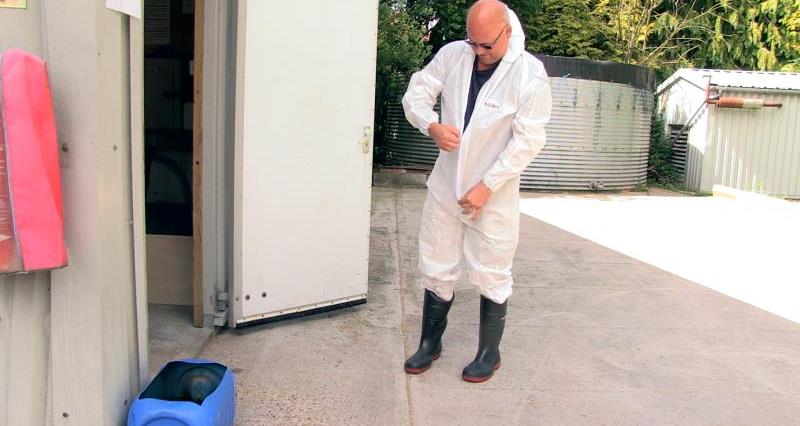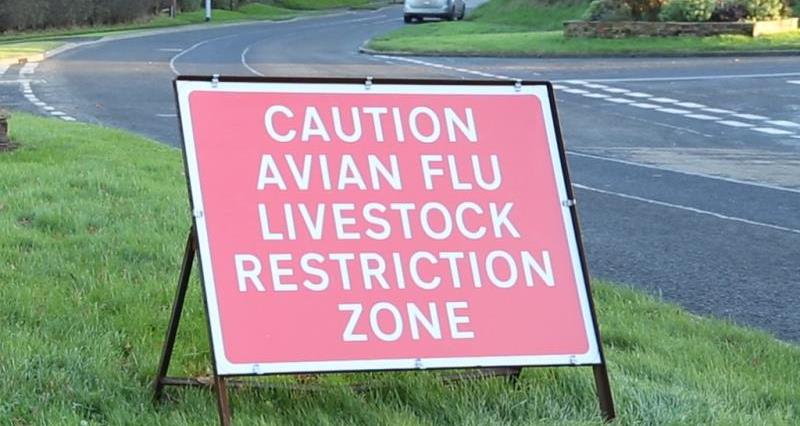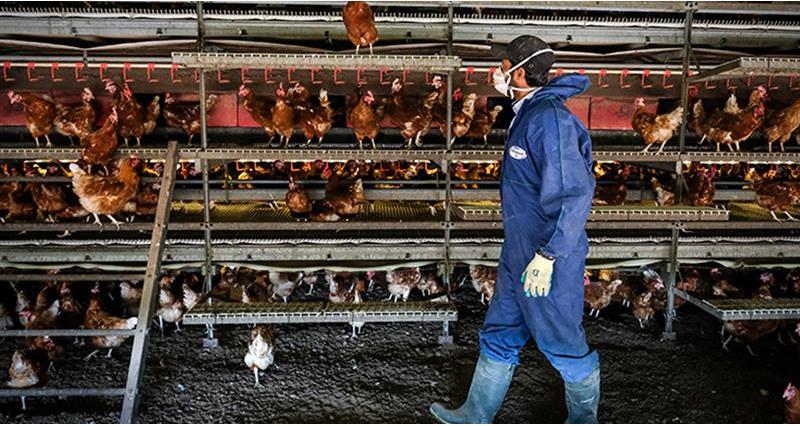When highly pathogenic avian influenza (HPAI) is confirmed in poultry, the government will impose a 3km Protection Zone and 10km Surveillance Zone around the infected premises (IP).
If low pathogenic avian influenza (LPAI) is confirmed in poultry, a smaller 1km Restricted Zone will be declared around the infected premises.
If highly pathogenic avian influenza is confirmed in non-poultry captive birds, the government may implement a Captive Bird (Monitoring) Controlled Zone around the IP following a risk assessment.
Use these quick links for more information on:
- Captive Bird (Monitoring) Controlled Zones
- HPAI 3km Protection Zone
- HPAI 10km Surveillance Zone
- Temporary Control Zones
Find more information on movement licensing in the following article: Avian influenza: movement licensing guidance
If any part of your holding falls within a zone under restriction then you must follow all restrictions applied to that zone across the whole site.
If parts of a single holding are in two separate zones then the whole of the site is considered to be in the zone with the highest level of restriction.
You can check if you are under restriction by using the APHA’s interactive map.
Information on restrictions
Captive Bird (Monitoring) Controlled Zones
Within a Captive Bird (Monitoring) Controlled Zone you must:
- Keep poultry and other captive birds housed inside their buildings. If this is impractical or significantly detrimental to welfare, then a veterinary inspector may direct you to isolate birds without housing them.
- Record any individuals visiting the premises where poultry or other captive birds are kept. Exceptions include zoos or wildlife parks (providing the public has no access to areas where birds are kept) and on public rights of way. An example visitor logbook can be downloaded from the Red Tractor website.
- Keep a record of all poultry or poultry eggs entering or leaving premises within the zone, except where eggs are being moved direct to retail premises or onwards from such premises.
- Adhere to strict biosecurity on and off the farm and follow any additional measures as directed by a veterinary inspector.
- Not allow the collection of poultry together for any fair, market, show, exhibition or other gathering within the zone.
- Not release game birds.
- Ensure appropriate biosecurity measures are in place for people and vehicles entering or leaving premises where poultry, other captive birds or eggs are kept – disinfectants must be from the approved list.
- Ensure anyone who moves any poultry, other captive bird, meat, feed, manure, slurry, litter or any other thing which may be contaminated cleanses and disinfects the vehicle and any equipment used to transport that thing as soon as it is unloaded.
Anyone involved in the transport or marketing of poultry or poultry eggs must also make a record of those that are transported or marketed.
Please note, movement licences are not required for movements into or out of a Captive Bird (Monitoring) Controlled Zone, unless the movement starts or finishes in a Protection or Surveillance Zone.
HPAI 3km Protection Zone
Within a HPAI 3km Protection Zone you must:
- Keep poultry and other captive birds housed inside their buildings. If this is impractical or significantly detrimental to welfare, then a veterinary inspector may direct you to isolate birds without housing them.
- Ensure that all carcasses that are not seized or disposed of by a veterinary inspector are disposed of in accordance with their instructions.
- Adhere to strict biosecurity on and off the farm and follow any additional measures as directed by a veterinary inspector.
- Also follow the controls listed for the 10km surveillance zone below.
HPAI 10km Surveillance Zone
Within a HPAI 10km Surveillance Zone you must:
- Not move poultry, other captive birds or mammals (including pigs, sheep and cattle) to or from premises where poultry or other captive birds are kept (exceptions apply for pet animals) unless under licence.
- Not move poultry meat, litter, eggs, other livestock or animals within or outside of the zone unless under licence. Table eggs may be sent direct to wholesale or retail premises without a licence.
- Pack any eggs going to a designated packing centre in disposable packaging. General licences are available for movement of table eggs in England, Wales and Scotland which allow reusable packaging to be used, subject to certain biosecurity measures being met.
- Record any individuals visiting the premises where poultry or other captive birds are kept. Exceptions include zoos or wildlife parks (providing the public has no access to areas where birds are kept) and on public rights of way. An example visitor logbook can be downloaded from the Red Tractor website.
- Keep a record of all poultry or poultry eggs entering or leaving premises within the zone, except where eggs are being moved direct to retail premises or onwards from such premises.
- Ensure appropriate biosecurity measures are in place for people and vehicles entering or leaving premises where poultry, other captive birds or eggs are kept – disinfectants must be from the approved list.
- Ensure anyone who moves any poultry, other captive bird, meat, feed, manure, slurry, litter or any other thing which may be contaminated cleanses and disinfects the vehicle and any equipment used to transport that thing as soon as it is unloaded.
- Not remove or spread poultry litter, manure or slurry unless under licence.
- Not permit any poultry or captive birds to be exhibited at any fair, market, show, or gathering.
- Not release game birds.
Anyone involved in the transport or marketing of poultry or poultry eggs must also make a record of those that are transported or marketed.
Poultry and eggs may be transported through disease control zones on a major highway or railway if no stop is made within the zone.
Temporary Control Zones
Temporary Control Zones may be declared if avian influenza is suspected and the Chief Veterinary Officer has decided to cull the birds on suspicion of notifiable avian disease.
If AI is confirmed, these will become a 3km Protection Zone and a 10km Surveillance Zone.
If the site nests negative for notifiable disease then the Temporary Control Zones will be lifted.
The restrictions applied in the Temporary Control Zones will be detailed in the ‘Movement controls and licences’ section of Defra’s avian influenza web page.
Please note that any general licences that have been issued will not be applicable in Temporary Control Zones and individual movement licences will need to be applied for.
The latest information on any current outbreaks and full details on restrictions can be found at: Bird flu (avian influenza): latest situation in England
Find out about movement licensing guidance here.



